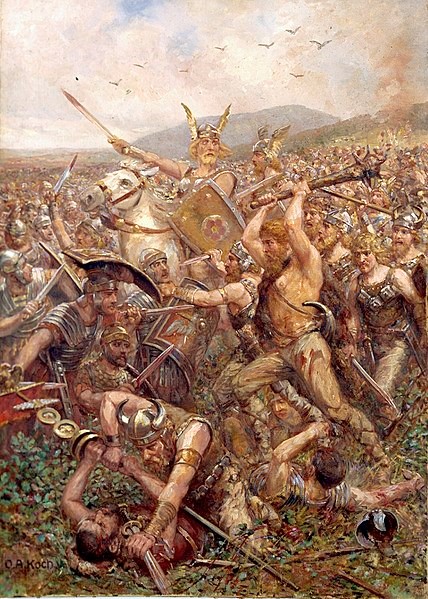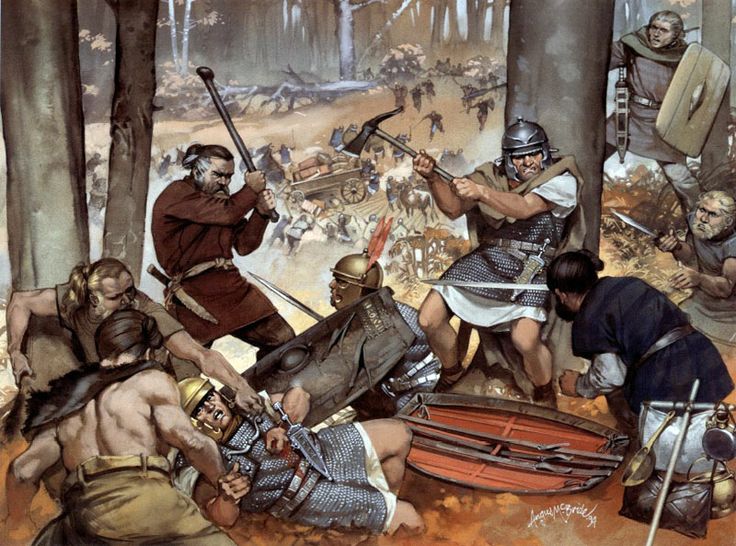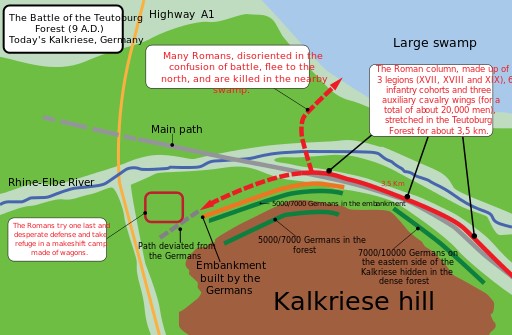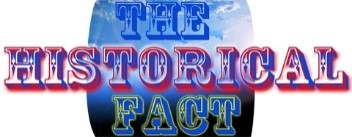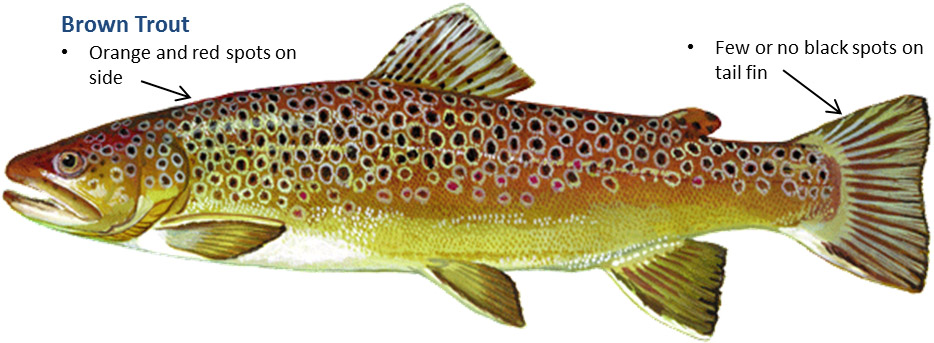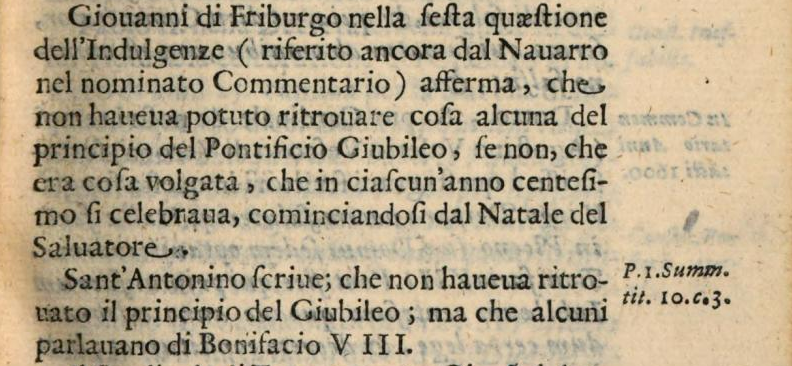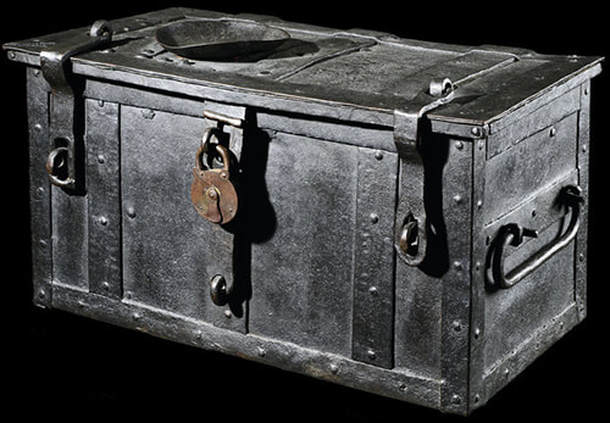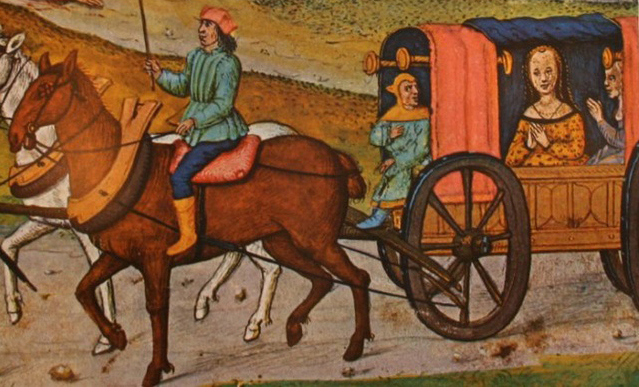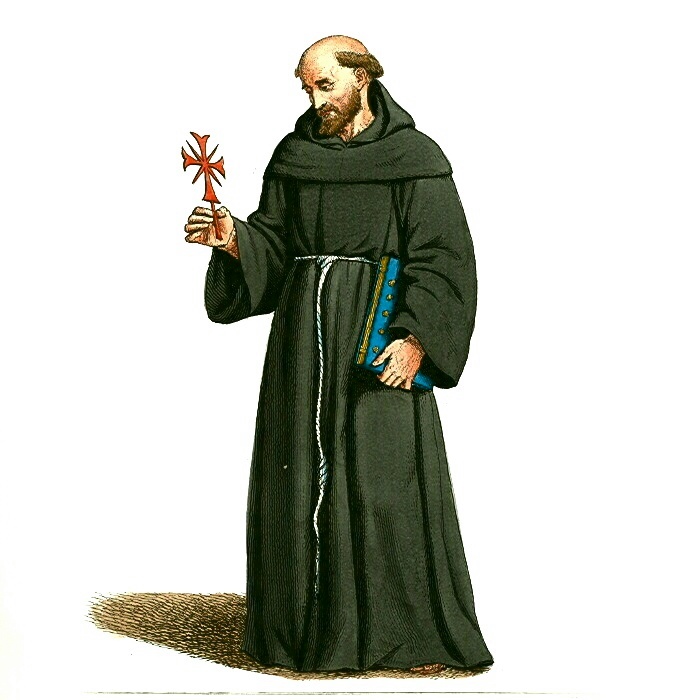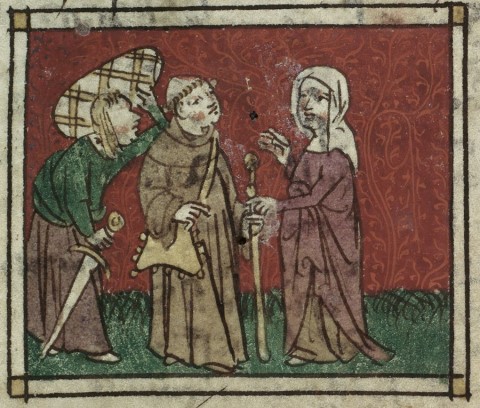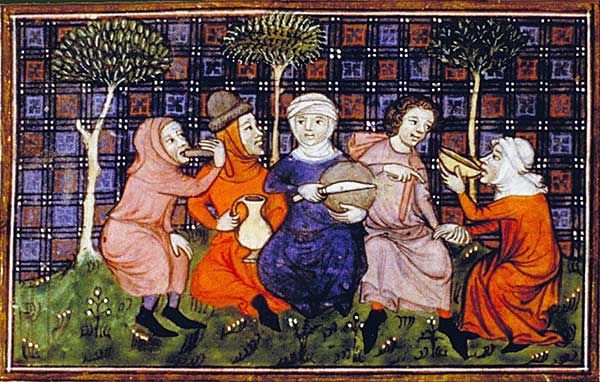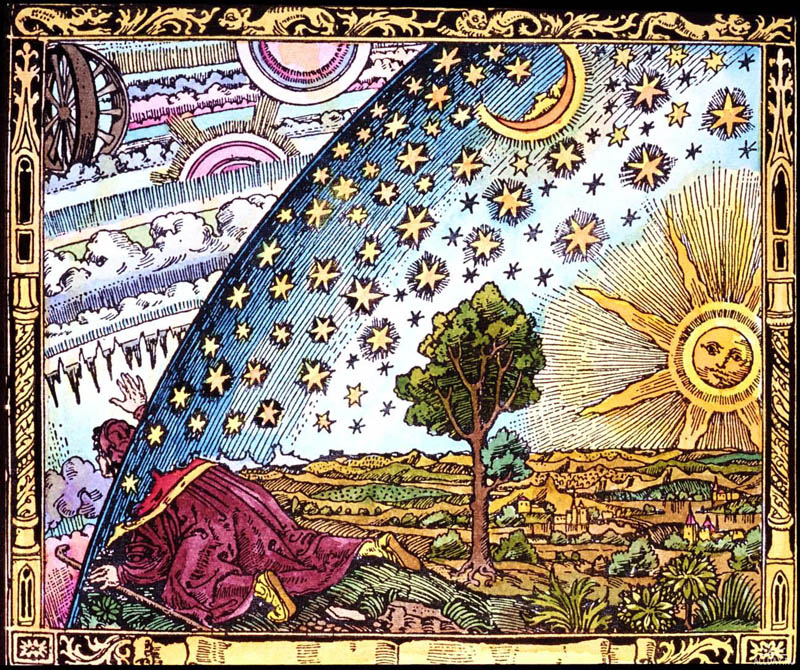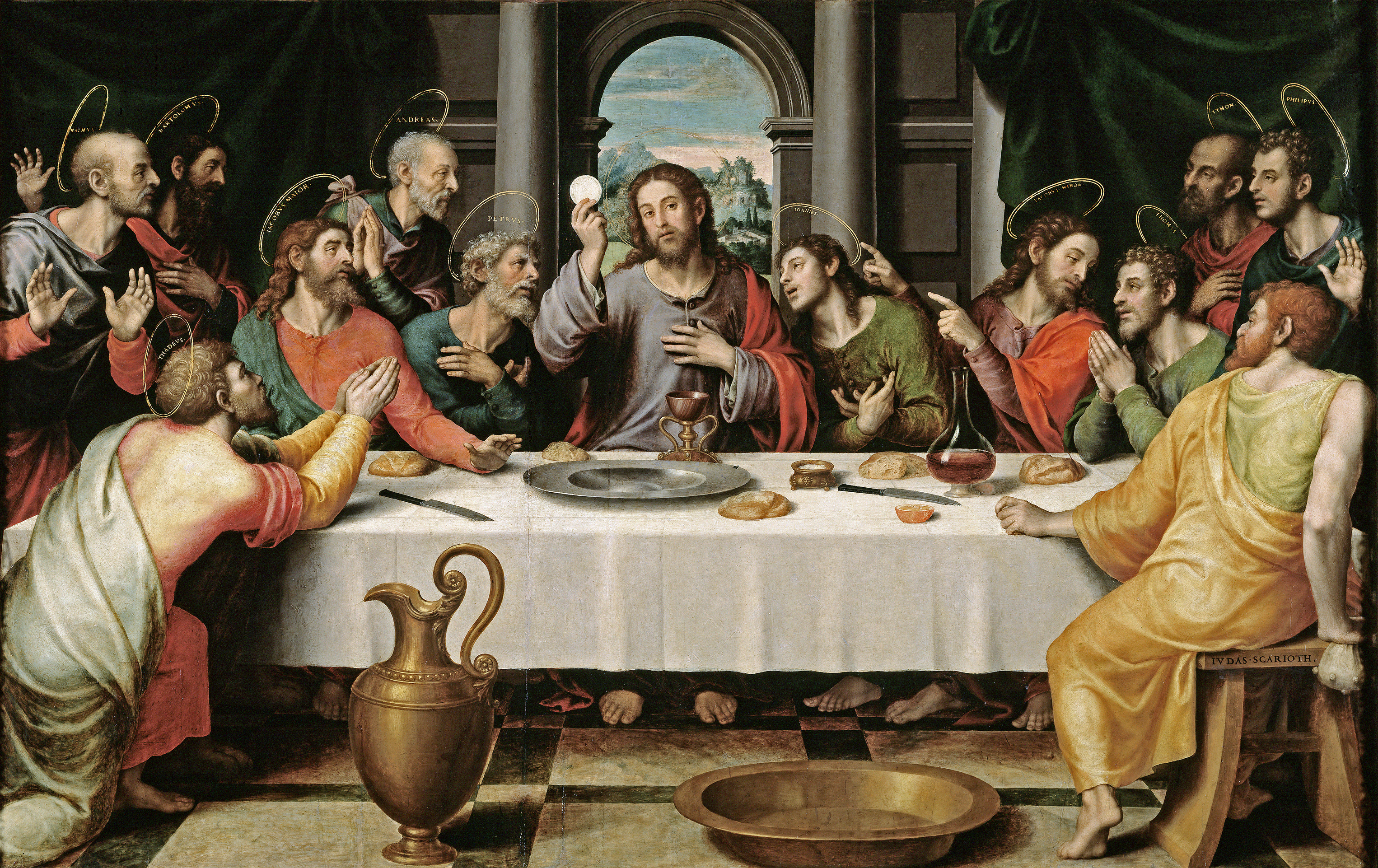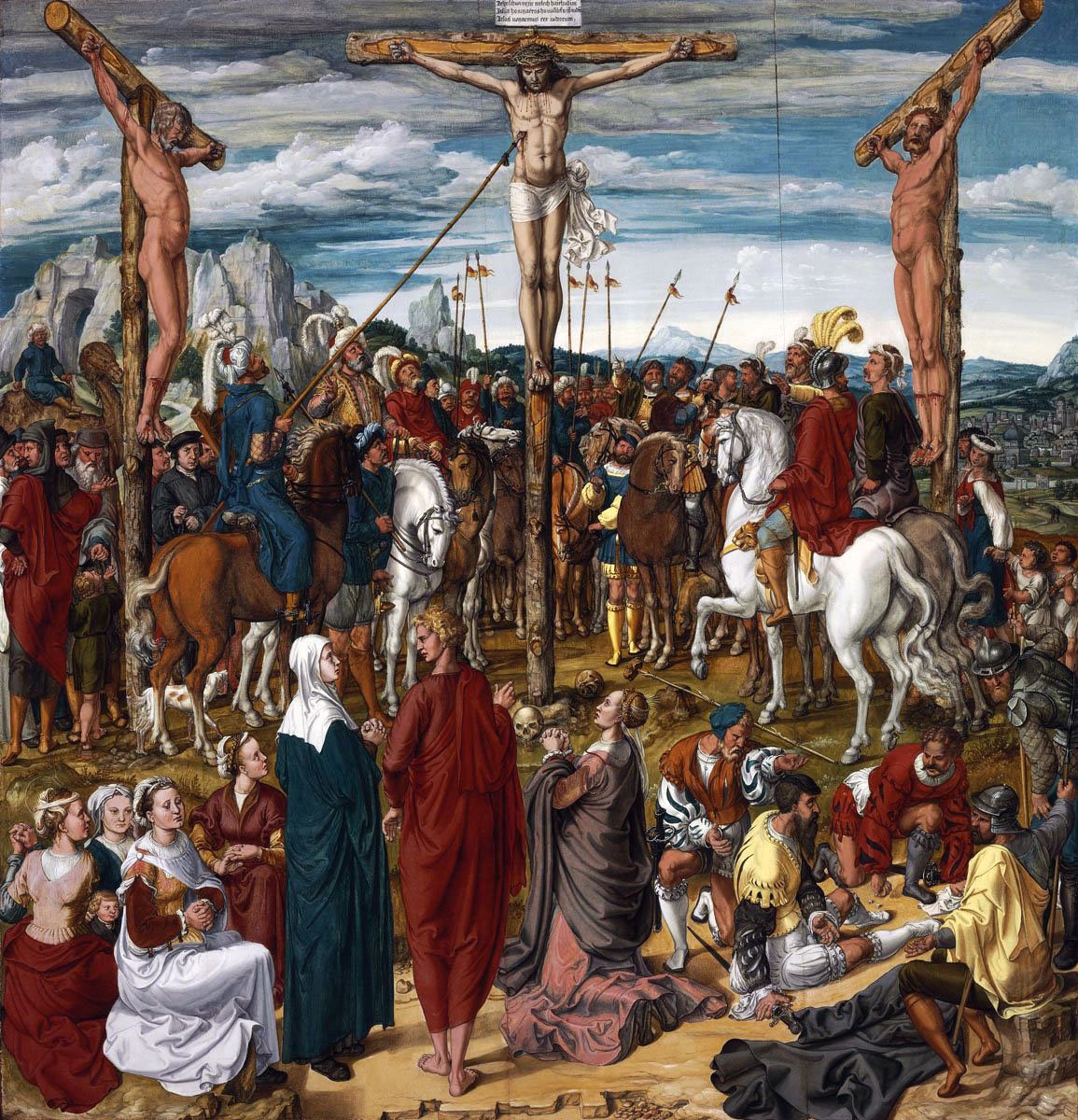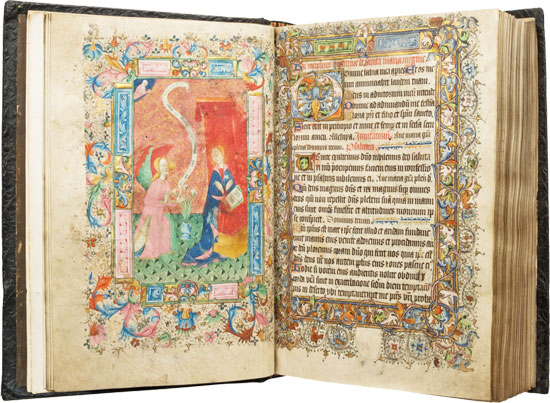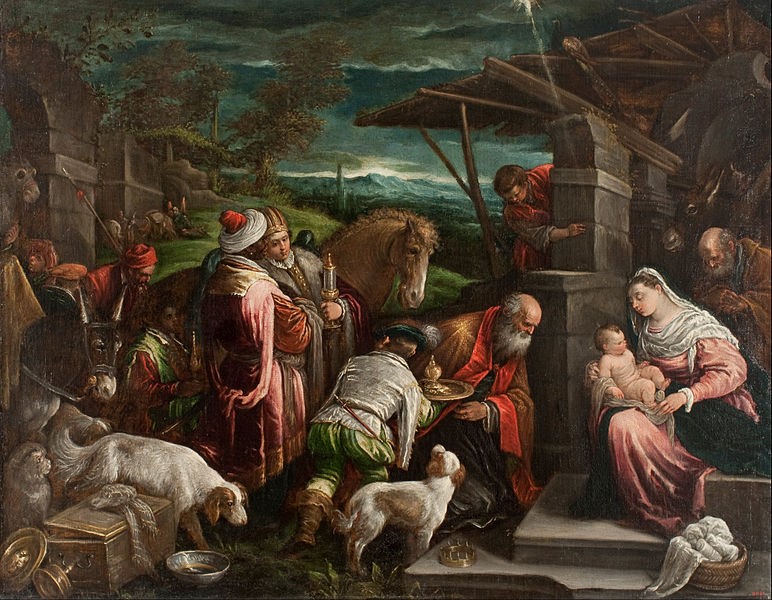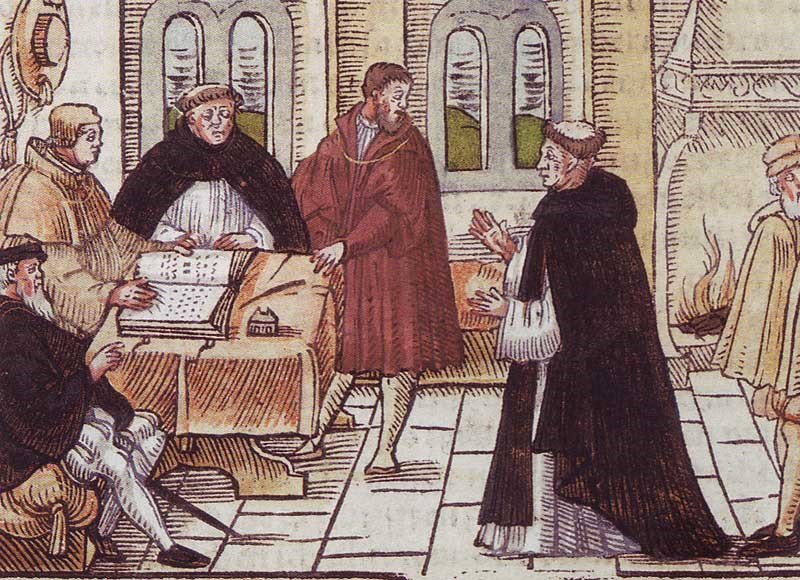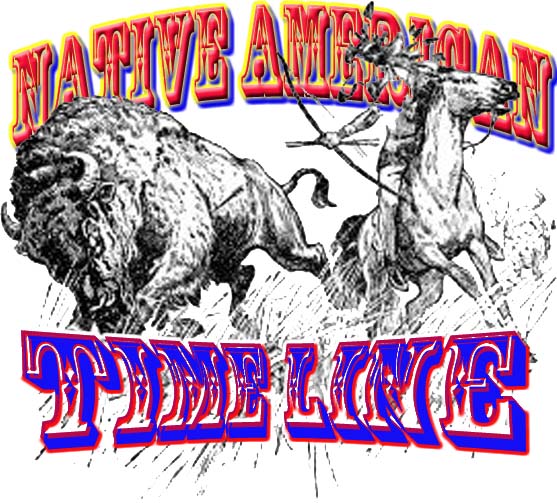Early one morning, as fog covered the valley floor, Knauss stepped out of the lush green hills of Hassan, Germania, with Peter and cautiously surveyed the countryside below. The mist began to disperse with the hint of a light breeze. And the birds were announcing their presence in the treetops. They could hear the scampering of small animals all around them as the forest came alive.
He paused for a moment, then went down on one knee and put his arm around his young son, saying to him, “Every day brings us new and unknown opportunities and dangers. You have to be able to recognize which one you are dealing with at any moment, my son.”
Knauss leaned his ear toward the birds above their heads and listened, “They are announcing to the rest of the forest that it is safe for them to start their day.” He said, “All the life in the forest live and die for the betterment of all. And that is the same foundation for the success of our tribe.”
He was very uneasy about entering this valley, which he had intentionally avoided many times before. This luscious green valley held a dark truth known to everyone who traveled through there. This valley was a mass Roman cemetery: all that was left of three legions of Roman soldiers that were destroyed by the Germanic tribes several years earlier.
Battle of the Teutoburg forest, 9 AD
The disaster was a tremendous blow to Rome’s plans for expansion into Germania: something from which they never entirely recovered. The Romans stay was short-lived. General Germanicus massacred them at the start of his invasion of northern Germany, and an area of 50 miles of Roman territory was laid waste. Much of this land became occupied by the Chatti and their Hessian descendants like Knauss and Peter.
The gravesite was so massive that people continuously dug through the ruins to find bits of metal they used to make tools. Doing so, they would uncover the gruesome ways that the men had died. Some of the bodies were well preserved. Even the leather sandals that they wore were admired as a more advanced form of footwear than the Germans were currently wearing on their feet.
Germania tribes destroy three legions of Roman soldiers
It was not only the massive Roman ruins in stone that were left as a reminder that a more magnificent civilization had come before them, but the graves of their past were very present in the fields from which they cultivated a meagre living. They used the land that was already cleared. These early farmers were the first untrained archaeologists to document and pass on what had happened in their homeland.
Battle of the Teutoburg Forest
To the tribe, Knauss’s son was known as Peter Lee because of the lesions left on his face after surviving the smallpox epidemic that passed through his village. Peter Lee’s mother had died in childbirth, and she was infected with smallpox, which she had passed on to Peter Lee. So, unfortunately, Peter Lee carried on his face the reminder of his mother’s infection and what had probably helped contribute to her death.
The history of toys – part 1
Peter Lee admired and took after his father, who was the best fisherman in the tribe. He knew where all the deep dark water was in all the local streams, and he knew the secret of only fishing upstream to catch the German Brown trout from the cold water. Peter Lee’s father had instilled in him the love of fishing and the satisfaction of providing for his family.
Brown trout
Peter Lee’s father also told him the stories of Jesus and the fisherman. Knauss had seen the inside of the great local cathedrals and admired the frescoes on the walls. He understood the story of Jesus dividing the fishes and the loaves between the people. The idea of a free meal was almost beyond people’s concept at that time.
Peter Lee’s father was very concerned with earning some money to give to the Church for the “Jubilee Indulgence” to help get Peter Lee’s mother out of purgatory. The Church had taught Peter Lee’s family that his mother was a sinner, and that was why she had contracted smallpox. She could only be saved from going to hell if someone paid her way out.
The sale of indulgences was abuse that had crept into the Catholic Church during the late 15th century and sparked the Lutheran Revolt. At first, the intent was to defray the cost of the Crusades. But later, the sale of indulgences was used to replenish the Papal treasury. This practice popularly epitomized Church corruption. The notion of paying money to receive Church forgiveness did not strike the average person as wrong. This “Jubilee Indulgence,” to redeem a dead loved one, had the Pope’s authorization and financed the construction of St. Peter’s Cathedral in Rome, known as the Vatican.
German text reads, “In the authority of all the saints, and in compassion towards you,
I absolve you from all sins and misdeeds, and remit all punishment for ten days.”
Because the Archbishop of Mainz (a town in Germany not far from where Peter Lee and Knauss resided) had massive debts, the Church decided to sell the Jubilee Indulgence in his area. The proceeds were split between the Archbishop, the bank to whom he owed money, and the Pope himself. To make matters worse, the Dominican Friar launched an advertising campaign that included the slogan, “As soon as a coin in coffer rings, the soul from Purgatory springs.” This little rhyme is what Knauss had heard all his life.
16th century Indulgence chest
A road led down the hill winding through the valley, but it was not always safe to travel on this path. It was well-known that travelers could be waylaid by someone jumping out at them from behind a tree as their backs were turned to them, providing little defence. It was not uncommon to see an old corpse from one of these attacks, left behind alongside the road, as one traveled through this land.
Knauss now figured that it was late enough in the day that it may be a little safer venturing down the path that led into the valley below. But it wasn’t long before he and Peter Lee could hear the clatter of approaching hooves and the rattle and squeak of wagon wheels. They knew who was coming. There was only one group of people that had this form of transportation, the wealthy elite. Maybe somebody from the clergy, or even royalty, is about to pass by. Quickly, he encouraged Peter Lee to step back into the brush until the travelers had passed.
Three in a wagon
As the coach bounded down the trail, the peace and quiet of the forest were interrupted. It was as if all present were attentive to the new arrivals in the woods. The coach became visible coming through the brush.
A mighty and magnificent steed was doing his best, keeping up with the crack of the whip by the driver. Dust rolled out from underneath the spinning wheels and trailed behind the carriage like puffs of smoke. The coach was open at the top, and you could see that behind the driver were seated three passengers, all of whom seemed to be enjoying the very bumpy and dusty ride. It was the passengers who were encouraging the driver to go faster.
As they approached, both Peter Lee and Knauss could identify that one of the passengers was a Friar, dressed in a long robe tied at the waist with a cord. He was a traveling preacher who worked for the Church. They were very poor and lived a simple and humble life. Friars were sent on critical religious missions. He wore beads around his neck with a small cross. It bounced up and down with the rhythm of the bumps in the road. He was laughing with great excitement, and his jolliness was contagious. The two men watching from the bushes shared a giggle between them. A man and a lady sat in the carriage with their back towards the driver. Their faces only came into view after they had passed.
Medieval Priest, Friar, or Monk
They both could tell by the passengers’ clean faces and clothing that they were successful in life. The lady was humbly dressed, but her clothing was all clean. Peter Lee and Knauss could see that her hair had been combed and styled: pinned-up in some way. She was not dressed like the women in Peter Lee’s tribe, yet it was not the clothing that brought her to his attention: it was how clean the two of them were.
As the coach passed, the man by happenstance looked directly into the bushes and saw Peter Lee’s eyes gazing back at him. Immediately he cried to the driver, “Whoa! Stop here, my good man.” The driver pulled back on the reins, and the coach slid to a stop just before crossing the Roman stone bridge that arched over the stream.
Old Roman bridge
The man calmly stepped out of the coach and encouraged the two men to come forth unto him. By this time, the lady and the Friar exited the coach, and they were equally encouraging them to join their company. The healthy and safe thing to do would be to avoid any contact with strangers, but found in the company of a Friar, Peter Lee and Knauss felt safe enough to approach them.
Strangers found in the company of a Friar
The man took a blanket from the carriage, spread it on the ground, and invited the two of them to join them in “Table fellowship.” The lady opened the basket and took out a loaf of bread, a bottle of wine, and a glass cup. Peter Lee’s eyes were fascinated with the cup; he had only seen cups and bowls made of wood or clay. You could see the lady’s hand and fingers right through this cup, and he was amazed. The lady took the bottle of wine and filled the cup, then set it beside the bread on the blanket.
The man introduced himself, “Good day to you brothers, my name is Johann (yo-hon): feel free to call me Hans, and this is my wife, Elisabeth. I am the eldest of six children born to my father, Martin, and my mother, Katharina. We travel in the company of this good Friar.” He spoke about how his father had died nine years earlier, in 1546, the same year Peter Lee was born. And now, he was carrying on his father’s work by traveling preaching to the people.
Johann motioned once again for the men to join them. He encouraged them to feel safe, “We mean you no harm, come join us in a communal meal.”
A communal meal
As Elisabeth set the table, Johann said, “I was twenty years old when father died in 1546.” Johann told the two men he had a letter from him that he would like to share with them.
Neither Knauss nor Peter Lee could read. There were only a few signs or letters they could recognize, but they were always eager and ready to listen to anyone that could. Johann had their complete attention, and he knew it, so he took advantage of this time to witness to them.
Johann pulled a letter from a pouch he kept in his shirt. It was a well-worn document that had obviously been removed from that pouch and read many times before. Knauss and Peter Lee recognized that this letter received special care as Johann unfolded it. Everyone became still and reverent, waiting for Johann to read; he began, “Grace and peace in Christ”!
Johann skipped over the personal stuff in the letter and got right to a story that his father Martin had written. Johann said that his father wrote him this, “I know a pretty, lovely, pleasant garden, where many children go. They wear golden coats and gather sweet apples, pears, cherries, and plums from under the trees. They sing, jump, and are merry. They also have pretty little horses with golden bridles and silver saddles. I asked the owner of the garden: ‘Whose children are these?’ He said: ‘These are the children who like to pray, study, and be pious.'”
A pretty, lovely, pleasant garden
Then Martin said: “My dear sir, I also have a son, his name is Johann. Might he not come into the garden, too, so that he might also eat such lovely apples and pears, ride such fine horses, and play with these children?”
Then the owner of the garden answered him: “If he likes to pray, study, and be pious, then he, too, may enter the garden.”
Martin went on to tell his son in the letter, “All who come will also get whistles and drums, lutes, and all kinds of stringed instruments. They will also dance and shoot with small crossbows.”
Then the owner showed Martin a lovely lawn, all ready for dancing, where golden whistles and drums and fine silver crossbows hung. But it was still early, so the children hadn’t eaten yet.
Martin said to the owner, “Ah, dear sir, I must hurry off and write all this to my dear son Johann so that he will be sure to study diligently, pray well, and be pious, so that he too may come into this garden.”
The owner said to him, “Yes, he may also enter this garden. Now, go and write to him thus.”
Johann did not have to look at the letter any longer, and he knew from memory what words were written in the text. His voice was soft and gentle as he spoke his father’s words, “My dear son, make sure to study God’s word and pray. Witness to all that cross your path so that they may study and pray, too. That way, all will get into the garden together. May you be herewith commended to God. Your dear father, Martin Luther.”
Johann respectfully re-folded and gently put the document back into the pouch and safely tucked it into his shirt.
Then Johann took the bread, broke it into pieces, and shared it with all of them, including the coach’s driver. He said a small prayer, “Our precious heavenly Father, we know to be a Christian without prayer is no more possible than to be alive without breathing. I have held many things in my hands, and I have lost them all; but whatever I have placed in God’s hands, that I still possess. I know whatever your heart clings to and confides in, that is really your God. Now bless us this day. Amen.”
The Lord’s Supper
Johann told them that the bread represented the breaking of Jesus’ body at the cross, and His blood was shed on our behalf. “He bore our sins, and through His sacrifice, we have complete redemption and total deliverance from the works of Satan.”
The Crucifixion of Jesus
Then again, after a small prayer, he took the cup and shared it amongst them, saying, “This is my blood, do this in remembrance of me.”
Peter Lee was not too sure about any meal that didn’t make him full, but he did understand the special meaning of what the man and lady had shared with them. He felt the holiness of the moment.
Johann finished by saying, “As new creations in Christ Jesus, we realize our freedom had been bought and paid for. We are forgiven of our sins, and we are redeemed, and we give thanks for it all in the name of Jesus.”
Knauss asked the question, “How can you have such faith in someone you cannot see.”
Johann answered him, saying, “Faith is a living, daring confidence in God’s grace, so sure and certain that a man could stake his life on it a thousand times. I know not the way God leads me, but well do I know my guide.” He went on further to answer him, “The Bible is alive: it speaks to me. It has feet, and it runs after me. It has hands, and it lays hold of me. For, He is the man to whom it all applies, every bit of it. If you want to interpret it well and confidently, set Christ before you. Ask Him to open your eyes to see His will for you.”
Medieval bible
Then the Friar began to speak, “To find Christ in such poverty, and what his swaddling clothes and manger signify, are explained this way: His poverty teaches how we should find him in our neighbors, the lowliest and the most needy; His swaddling clothes are the holy scriptures. Christ alone may stand before us.”
He told them that Martin Luther, Johann’s father, was the leader of the Protestant Reformation. He taught that “Salvation and, subsequently, eternal life is not earned by good deeds. But, he said, we received it only as a free, gift of God’s grace through the believer’s faith in Jesus Christ as Redeemer from sin.”
The first Christmas
All this time, Peter Lee was thinking to himself, “When you don’t know what to say, just listen, and let somebody else do the talking,” so he listened to these two men of God.
The message they spoke about was a deep well of inspiration to Peter Lee. He was receiving the living water of the Gospel, his thirst was great, and his satisfaction was total. He now had personal knowledge of the truth in Christ.
The Friar stood up and proclaimed, “Luther’s theology challenged the authority and office of the Pope by teaching that the Bible is the only source of divinely revealed knowledge from God.” Then the Friar let them know he was not happy, “The Church is not only responsible for what they say, but also for what they do not say. The truth has been kept from the common person. And I consider all the baptized Christians to be of a holy priesthood.”
The Protestant Reformation
Joining the Friar, Johann rose to his feet and looked upward toward the sky. Watching the clouds roll by, he described the Christian irony: “A Christian man is the freest of all, and subject to none. A Christian man is the most dutiful servant of all and subject to everyone.”
The Friar went on to say, “Those who identify with these, and all of Luther’s wider teachings, call themselves Lutherans. Luther humbly insisted on using the terms Christian or evangelical as the only acceptable names for individuals who profess Christ.” He continued, “We are the body of Christ, and the Church is not the building, but the people who built it.”
This was the first time that Peter Lee or Knauss had ever heard the word “Christian.”
The Friar re-explained to them and tried to reassure Knauss that indulgences were not necessary. “He has already paid the full price of salvation for all,” he told him.
Even so, Peter Lee’s father was far more zealous for the tradition of his ancestors. That’s why Knauss continued to cling to his belief in indulgences.
Some of what the Friar told them was above his head and only much later in life did Peter Lee understand the spiritual significance of that moment. Peter Lee was aware that these holy people were not as arrogant as some of the other clergy that he saw in the past. The man and woman were not afraid to give Peter Lee and his father a hug as they departed.
Timeline Native American 900 – 1598
>>Click here<<<
Next: The journey to America – picture book part 1
